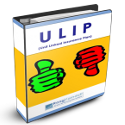The Banking Codes and Standards Board of India (BCSBI) has asked its member banks to publish the reference rate to which its floating rate loans are tied. The banks have also been asked to publish any changes made to the reference rate.
| There has been a very welcome (and desperately needed!) development in the area of home loans. Till now, if you had taken a home loan on a floating rate, you had no idea what that rate was tied to. It could be any arbitrary rate, like a bank’s “floating prime lending rate (PLR)” or its “internal rate”. |
It was vague, and no one outside the bank knew what it was and how it changed. Worse still, you didn’t even know when it changed – you came to know about it only through your home loan statement, which would arrive a couple of weeks after the change!
But this is going to change soon.
More transparency on floating interest rates – finally!
The Banking Codes and Standards Board of India (BCSBI) has suggested measures that would bring in the much needed transparency regarding the floating rates.
[BCSBI is an initiative jointly promoted by the Reserve Bank of India (RBI) and Indian Banks’ Association (IBA)]
(Should you go in for floating interest rate, or a fixed interest rate? Check out “To float or not to float, that is the question!”)
Reference rates to be published
BCSBI has asked all its member banks to disclose the reference rate to which its floating rate loans are tied to. This means that banks would need to communicate the reference rate to you if you have availed of a floating interest rate home loan.
BCSBI currently has 79 banks as its members. Most commercial banks are BCSBI member banks, so this directive would effectively apply to almost all banks.
You can download the list of member banks here.
(You need to be logged-in to download the list. Please take advantage of the free registration that takes less than a minute. To know the benefits of registration, please click here.)
Changes to the reference rates to be published
Not just this, banks would need to publish any changes in the reference rate on their websites as soon as the change takes place! This would also be displayed in their branches.
Floating rate to fixed rate conversion, or vice versa
Banks would also need to inform you in case there is an option to convert a fixed rate loan to a floating rate loan, or a floating rate loan to a fixed rate loan, and the fee for such a switch.
Disclosure of reset clause and date
If your fixed rate loan has a reset clause (through which the “fixed” rate can be changed based on interest rates prevailing in the market), the bank would need to inform you about it, and the dates on which this clause can be exercised.
Other changes proposed by BCSBI
Apart from the measures announced for floating rates, BCSBI has also announced many other transparency measures:
– Banks would need to explain the income tax implications of interest income earned from a fixed (or term) deposit account whenever a fixed deposit is opened by you
– Banks would need to act on customer complaints within 30 days
– Banks would need to come out with “Most important terms and conditions”, or MITC, for its credit cards and loans. MITC would be a simple (and shorter!) version of the terms and conditions
– Banks would need to state their policies on cheque collection, collection of dues, and a schedule of various charges levied on customers on their websites
– Banks would need to inform joint account holders before they can categorize an account as a dormant account or an inoperative account
– Banks would need to return all documents (title deeds, etc) of a mortgaged property to the borrower within 15 days of full repayment of a home loan
Download
You can download the full text of the code here.
(You need to be logged-in to download the document. Please take advantage of the free registration that takes less than a minute. To know the benefits of registration, please click here.)
Other articles you might be interested in:
- 7 factors you should consider before buying a second house
- Interest rates are bottoming out – Want to take a loan? The right time is now!
- Blessed with a son – Rishi Vamdatt
- RaagVamdatt.com is up and running again
- Highlights of the draft “New Direct Tax Code”
- Securities Transaction Tax (STT) not removed in budget 2009 – Good or bad for you?
- Can’t find an ATM? Withdraw cash from a POS terminal using your debit card
- Income tax filing season is over – Now play this “Split Stocks” game online and relax!
- Shopping online using a credit or debit card: Verified by Visa / MasterCard mandatory from 1st Aug 2009
- Tax on gifts (Gift tax): When to pay, how much to pay and what is exempt
- RaagVamdatt.com launches mobile enabled site – Now, view the website on you cell phone
- Income Tax (IT) and death of a person – Responsibilities of legal heirs
- New Fund Offers (NFOs) after announcement of entry load removal – Should you invest?





